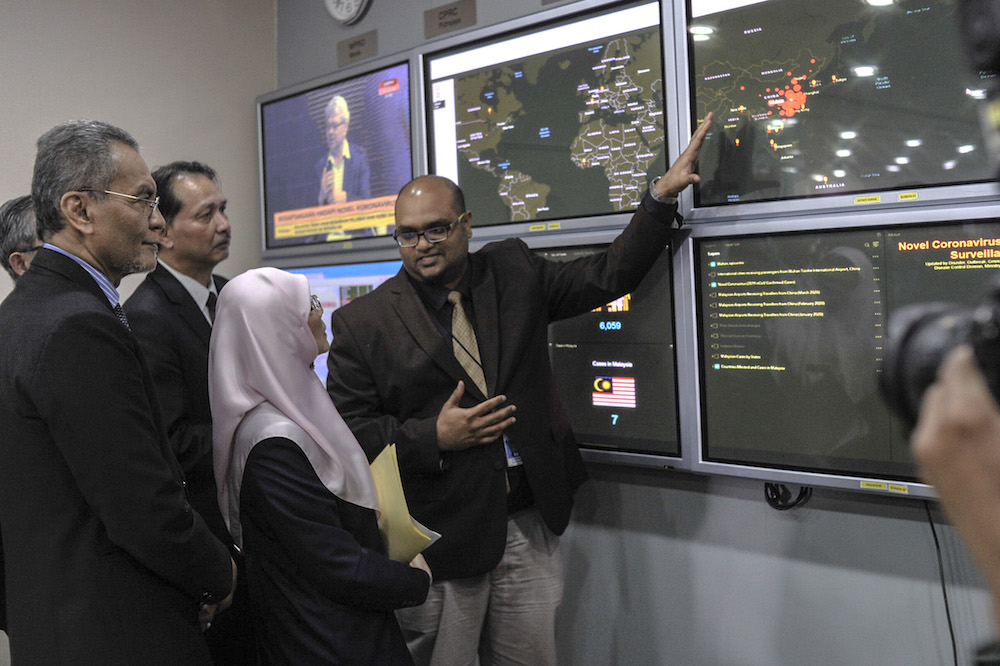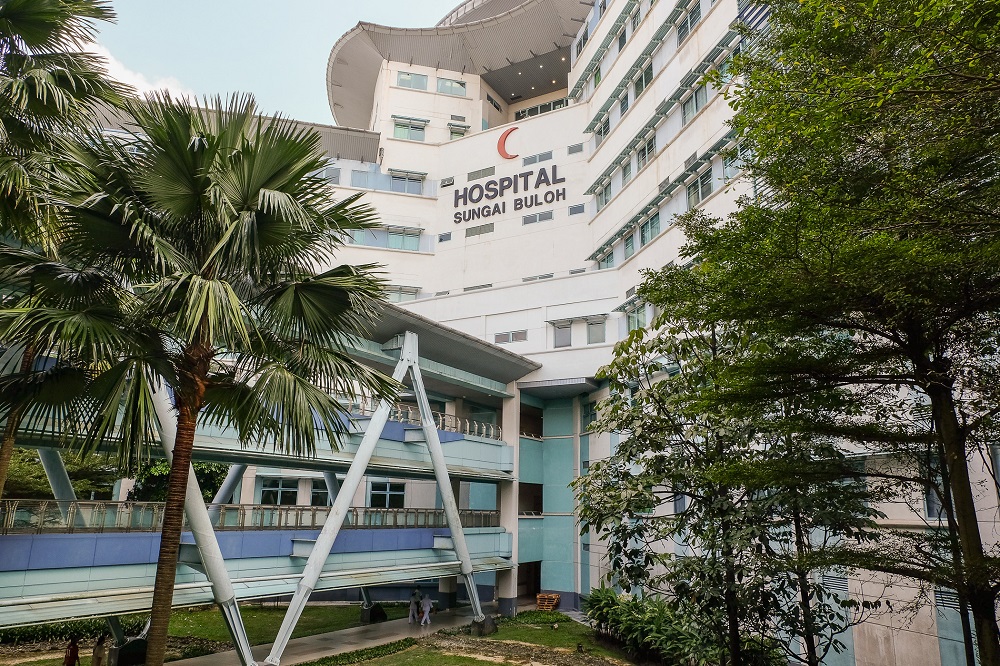SUNGAI BULOH, Feb 1 — Within Sungai Buloh Hospital here sits an obscure medical facility known simply as the National Referral Centre for Infectious Diseases.
Its name is unlikely to be familiar to the general public but its importance has been thrust to the fore by the sudden arrival of the Wuhan coronavirus (2019-nCoV) in Malaysia.
While many countries are scrambling to react to the possible pandemic that has killed 170 people in China, Malaysia has responded with a preparedness that has been described as among the best worldwide.
This is, in no small part, in thanks for the National Referral Centre for Infectious Diseases and its experience dealing with such outbreaks in Malaysia, which includes handling the quarantine, monitoring, counselling, and care responses that are deployed.
The centre came to be in 2004 when then-health minister, Datuk Chua Jui Meng proposed an infectious diseases centre within the Institute for Medical Research to work with the National Public Health Laboratory as Malaysia’s twin guardians against communicable disease outbreaks.
Malaysia was then fresh from dealing with the severe acute respiratory syndrome-related coronavirus (SARS-CoV) of 2003 and the Nipah virus outbreak from the 90s.
The centre would also be at the forefront when the Middle East respiratory syndrome-related coronavirus (MERS-CoV) hit in 2005.
Since then, it has led the country’s responses to various other outbreaks ranging from Influenza A virus in 2009, bird flu infections and swine flu.
“In the hospital, the patient is brought in through the emergency entrance and taken to a special area and, if decided the patient needs to be admitted for high risk of infection, is brought through a dedicated route from the emergency department to a dedicated lift to the ward,” said infectious diseases consultant Dr Benedict Sim who works with the Ministry of Health.
“Within the isolation ward, there are double-layered walls. There’s an inner room and a corridor outside the room with intercom facilities to talk to the patient so we don’t have to enter unless necessary.”

Dr Sim said workers at the centre are fully equipped with protective clothing for their safety and thoroughly drilled on how to respond to infectious disease outbreaks.
Visual guides are also clearly displayed to help provide procedural guidance to health workers who must operate under highly stressful conditions, he explained.
Surfaces are also clearly demarcated between clean and contaminated areas to indicate which are safe and which are potentially hazardous.
“We also have a dedicated X-ray machine to work in that ward so that machine isn’t shared with patients outside the ward or for those without infection.”
Those working in the centre are also health tested twice daily, with specific documentation for those who come into contact with infectious diseases such as the 2019-nCoV.
Such workers are also restricted to only treating patients with the virus to prevent any risk of cross contamination.

On the centre’s ability to cope in the event infections surge, Dr Sim said there were adequate resources at the moment.
“We have the capacity to increase the number of patients that we are housing in the event of more cases.
“We have a contingency plan to extend from one ward to another ward or perhaps even the whole floor,” said Dr Sim adding there is a plan for “surge capacity” in case an uncontrollable amount of infected patients pop up.
Additionally, the Health Ministry has also designated 25 other hospitals as capable of responding to an outbreak.
Terkini: Senarai 26 hospital seluruh negara bagi mengendalikan kes-kes yang disyaki (Patient-under-investigation) dan sahih (confirmed) 2019-nCoV. #coronavirus#2019nCoV #WuhanOutbreak pic.twitter.com/S9389VVY50
— KKMPutrajaya (@KKMPutrajaya) January 28, 2020
Not only that, Malaysia also has a dedicated Crisis Preparedness and Response Centre (CPRC), which has been responsible for coordinating public health responses to medical events in the country.
The CPRC determines whether there is any need to increase the country’s level of preparedness and develops governmental strategies to mitigate potential public health disasters, according to Dr Mahesh Appannan who is the ministry’s deputy director of disease control.
“We monitor the entire outbreak situation and we communicate our findings with the public through you, the media,” he explained.

The 2019-nCoV outbreak has demonstrated the importance of timely and direct information on the situation in order to counter and neutralise fake news that could potentially cause public alarm or even panic.
Dr Mahesh said the CPRC maintained an operation room where the latest current information is available.
Authorities have also limited official spokespersons to just Health Minister Datuk Seri Dzulkefly Ahmad and Health director-general Datuk Dr Noor Hisham Abdullah in order to prevent conflicting information from reaching the public and causing confusion.
“Apart from that we do surveillance, risk assessment, risk communication and have a joint information centre to disseminate all the information we have on an outbreak,” he added.

According to Malaysian Public Health Medicine Specialist Association president Datuk Dr Zainal Ariffin Omar, based on his experience in the disease control division, it is evident that the current measures taken by the health ministry to address the coronavirus threat, reflect the government’s maturity in addressing such issues.
“As this is not the first time we are dealing with such situations, we already have the screening system and procedures such as contact tracing, quarantine, monitoring in place and when there is a patient-under-investigation, they will be referred to the Sungai Buloh Hospital,” he told Bernama.
According to the Global Health Security (GHS) Index 2019, Malaysia is ranked 18th out of 195 countries, it shows that the country is prepared when it comes to preventing, detecting and responding to infectious disease outbreaks. GHS index is an internationally recognised assessment of a country’s capability in handling any outbreak, including the 2019 novel coronavirus.
The countries are listed in three categories — most prepared, more prepared and least prepared — with Malaysia in the second category. Malaysia appears to be more prepared than neighbouring countries such as Singapore and Indonesia, which were ranked 24th and 30th respectively, out of 195 countries.
The United States was ranked first with a score of 83.5, followed by Britain (77.9) and the Netherlands (75.6) while Thailand was ranked 6th (73.2) and South Korea 9th (70.2)
The GHS Index is a project of the Nuclear Threat Initiative and the Johns Hopkins Centre for Health Security and was developed with The Economist Intelligence Unit to evaluate on the preparedness of nations in facing the increasing risks of high-consequences and globally catastrophic biological events.





















